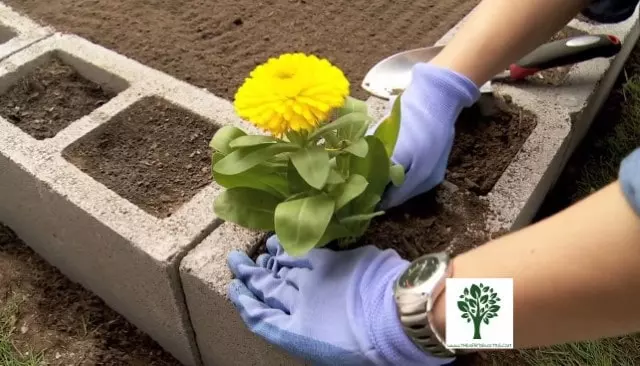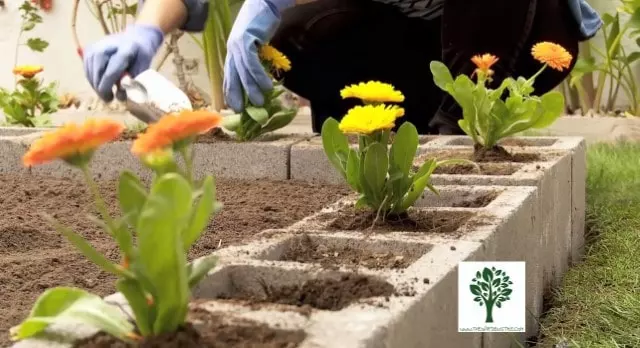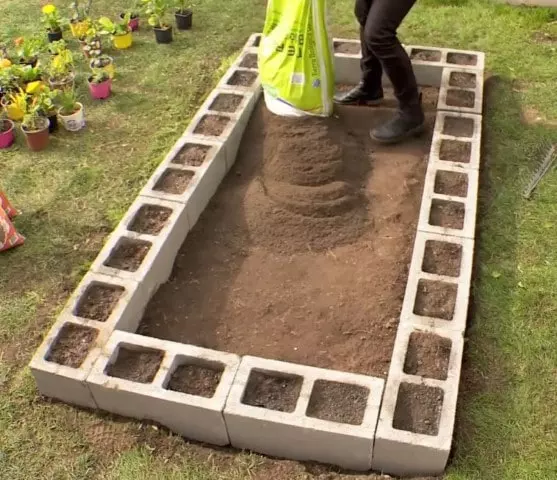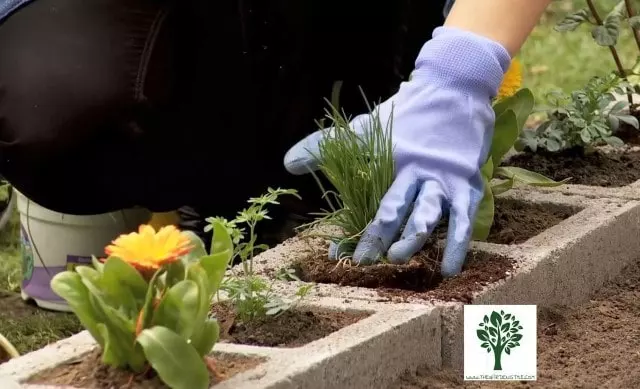With cinder blocks you can do many things, one of them is to make cinder block garden beds for plants. Using cinder blocks, you can easily make beds for plants in the garden. In this article, I will explain everything you need to know about gardening plants in cinder blocks.
Concrete blocks and cinder blocks are very similar but have a slight difference when they are constructed. The concrete blocks are made of pure concrete. Cinder blocks usually have a cinder aggregate which makes them less expensive than traditional concrete blocks, but they are just as strong. If you are interested in this topic you may learn more about cinder blocks in this article from Cobra Stone.
Pots are one of the most used containers to have plants in a house, the current market offers endless alternatives. Containers o pots come in different models, colors, materials, and sizes, and that is why they can be adapted to different situations.
However, if you are looking for creative ideas that allow you to integrate plants and flowers into the decoration of your home, here is how to plant in cinder blocks.
Table of Contents
What Plants Grow Well in Cinder Blocks
Many plants grow in cinder blocks, the plants that grow best on cinder blocks are those that develop small roots. It is important to select plant species that develop small roots so that they can grow well in the cinder blocks.
Some herbs such as cilantro grow very well in cinder blocks. It is also possible to plant arugula, carrots, lettuce, spinach, chard, and other vegetables in cinder blocks. As mentioned above, it is important to select plant species that develop small roots. These are the plants that grow well in cinder blocks:
- Arugula
- Beans
- Beet
- Carrot
- Cilantro
- Dill
- Garlic
- Kohlrabi
- Leek
- Lettuce
- Marigold
- Marjoram
- Mustard
- Okra
- Onion
- Parsley
- Pea
- Pepper
- Radish
- Spinach
- Strawberry
- Sunflower (Small species)
- Watercress
- Fuchsias
- Petunias
- Geraniums
- Verbena
- Pansy
Flowers can also be planted in the cinder blocks. For example, petunias, geraniums, and pansies that have small roots grow very well in cinder blocks.

What Plants Don’t Grow Well in Cinder Blocks
Some plants do not grow well in cinder blocks because they need a lot of space to develop properly. Plants that do not grow well in cinder blocks have very large roots and therefore need space to develop.
For example, broccoli and tomatoes do not grow well in cinder blocks because they need space to grow and develop. However, Cherry tomatoes grow in cinder blocks, although will not bear as much fruit as they would in a larger pot or if planted directly in the garden.
Standard cinder block sizes are 8x8x16 inches or 8x8x8 inches. Depending on the type of cinder block, you will know which plant is suitable for planting in cinder blocks. Here is a list of plants that do not grow well in cinder blocks, so you should avoid these plants in cinder blocks:
- Broccoli
- Tomato
- Cabbage
- Cauliflower
- Corn
- Eggplant
- Lemongrass
- Melon
- Watermelon
- Mint
- Potato
- Pumpkin
- Sweet potato
Other plants grow well in cinder blocks, it all depends on the amount of light they receive and watering. Plants that grow well in cinder blocks are the following:

Are Concrete Blocks Safe for Vegetable Gardens?
Are Concrete Blocks Safe for Vegetable Gardens? Concrete blocks are safe for vegetable gardens. The concrete blocks are made of water + concrete + sand or stone chips. As you can see, the ingredients of concrete blocks are non-chemical and non-toxic.
Grow your vegetables in the concrete blocks without any risk because the concrete blocks are not made with any chemicals.

How to Plant in Cinder Blocks
How to Plant in Cinder Blocks? Now I will explain how to plant in cinder blocks correctly. As I mentioned earlier the standard cinder block size is 8x8x16 inches or 8x8x8 inches, based on the type of cinder block you choose you will need to choose which plants to plant in the cinder blocks. In an article from West Virginia University, they explain more about the square foot gardening method, which is ideal for planting plants in cinder blocks.
The cinder blocks should be located in a sector of the garden that receives 6 to 8 hours of sun for the plants to develop correctly. I recommend painting the cinder blocks with white acrylic paint to reflect the sun’s heat. If you live in an area where the summer is very strong, you should make sure to wet the cinder blocks because they can get very hot and that will not be good for the plants.
Select the plants to be planted in the cinder blocks, and consider the hours of sunlight that the cinder blocks will receive to choose the right plants. You should combine some herbs and other vegetable plants, the herbs will help keep away insects that can attack vegetables.
Use a well-drained substrate with a good amount of organic matter for planting plants in cinder blocks. This will ensure that your plants will grow properly. During the summer, if your cinder blocks get too much sunlight, you may need to water them more often because the soil will dry out faster.
By following all these tips, you will be able to plant in cinder blocks without any problem and have a lot of plants in your cinder blocks.

Final Conclusions
Building a garden with cinder blocks has several advantages, for example, cinder blocks are cheaper than the wooden boards used to build garden beds. I like to use cinder blocks because I can also paint them easily, and they last for many years without repainting.
Choosing the right plants that can be planted in cinder blocks will allow you to have a wide variety of plants in your cinder blocks. Normally in the cinder blocks that I use to make my garden bed, I usually plant herbs in the holes of the cinder blocks. With herbs, I make sure to repel insects that I don’t want on my flowers and vegetables naturally.
I hope this article on plants in cinder blocks will be useful and helpful. I recommend our article about ideas for vertical wall gardens.

